How to Check for Diastasis Recti
{Diastasis Recti Test instructions below}
When checking for diastasis recti be sure of these three things:
- I recommend waiting until at least 6-10 weeks postpartum {the closer to week 10 postpartum the better because you can start including more full body and deep core exercises in those first workouts regardless of whether you have diastasis recti or not}
- You have already started to re-active or learn how to properly activate your deep core {not sure how to do that be sure to read the Knocked Up Fitness Guide to Pregnancy Once you start to properly engage your deep core muscles you can almost overnight start to decrease separation.
- I also recommend having someone else do the diastasis recti test on you {if possible} because it can be challenging to keep a good deep core connection while trying to test yourself {but you can do it just do your best to keep your abdominals engaged}
Personal Trainers and Pilates Instructors: learn in-depth training about prevention and recovery of diastasis recti for your clients by with completion of my Prenatal + Postnatal Exercise Specialist Course.
Diastasis Recti
Diastasis Recti {image on left} vs. Normal Rectus Abdominal Spacing {image on right}
—>Instead of focusing on “core” exercises right away, focus on getting your deep core connection back while doing full body exercises, such as squats and my other recommended safe and effective exercises you can find here plus my all-time favorite mentioned below in this article. Then you or a friend or trainer can check for abdominal separation as you approach 10 weeks postpartum.
Always roll on your side, then to your back, and the same to get up, to avoid that “crunch” position until your diastasis recti is healed.
The Diastasis Recti Test
(this is the only time you are allowed to do a “crunch” because you must in order to be properly checked for separation):
- Start on your back and neutral position {so the front of your hip bones are parallel to the floor avoid jamming your low back into the floor} with knees bent and feet hip-width apart.
- Exhale and contract as much of your core muscles as possible {this includes pelvic floor engagement} think “zipping up your belly”.
- Flex up doing a small neutral crunch while keeping your abdominals as contracted as possible (lax abdominal muscles can show bigger diastasis recti then you may actually have).
- Gently palpate down your linea alba {the middle space between your rectus abdominals} from just below your sternum to about 2 inches above your pubic bone measuring with your fingers at 4 points where and how much separation you may have:
Point 1: just below the sternum
Point 2: just above the belly button (typically this is where you may find the most severe separation)
Point 3: just below the belly button
Point 4: lower abdominal area 2 inches above her pubic bone.
- Then take note of how much fascial connection you may or may not feel, that also gives you an indication of how severe the diastasis recti may be:
- If you can press down into your abdominal cavity that is an indication of more severe diastasis recti and very little to no fascial tension {something that you can create – increasing the fascial connection of your abdominals takes time but it can be done and can help you close the separation and also give your abdominals more support and strength}.
- If you feel a slight tightness between your rectus abdominis {those 6-pack muscles} that indicates you do have some fascial connection even though you may have separation {meaning your repair time could be less}.
I’m including my all-time favorite postpartum exercise {if you have diastasis recti or not, it’s a favorite among my clients and I LOVE what it can do for your body}
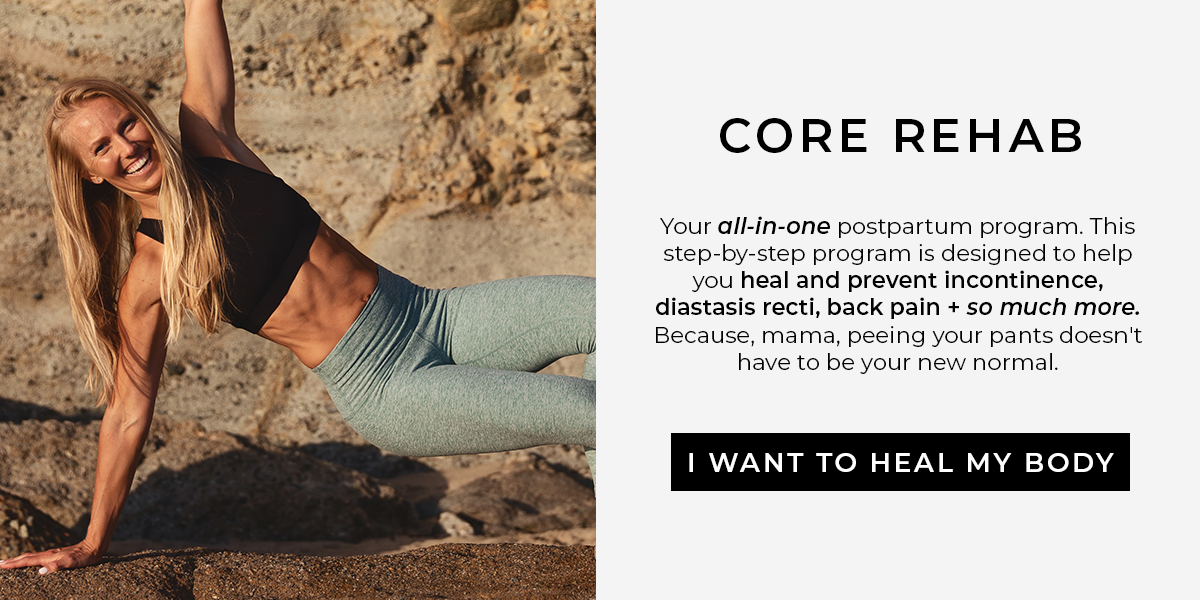
My Pilates Infused Functional Workouts “for the busy mom” include over 2 hours of workouts and are designed for after baby and beyond!
Hip Rolls
A simple, yet very effective exercise that can help activate your deep core muscles {pelvic floor muscles along with transverse abdominals, intercostals and multifidous}. This may not be a super strong connective exercise, but that’s why it’s a great exercise to do at any stage postpartum or beyond to activate your deep core muscles. It’s important to do this exercise with the correct breath as that helps to create proper deep core activation. I recommend doing them daily. Do in sets of 10 slow reps.
- Lay on your back with your spine in a neutral position, knees bent and feet hip-width apart. Optional: place a small ball or pillow between your knees, this can help you find your deep core muscles more easily. (Neutral spine is when the pelvis is balanced between the exaggerated posterior and anterior positions, the PSIS and ASIS points)
- Exhale to gently lift up on your pelvic floor muscles, squeezing the ball or pillow or knees together while simultaneously articulating your spine up into a bridge position. Avoid your ribs “popping.”
- Inhale to hold the position.
- Exhale to slowly articulate rolling your spine back down one vertebra at a time initiating the movement by gently drawing your ribcage down.
- Finish in a neutral spine position.

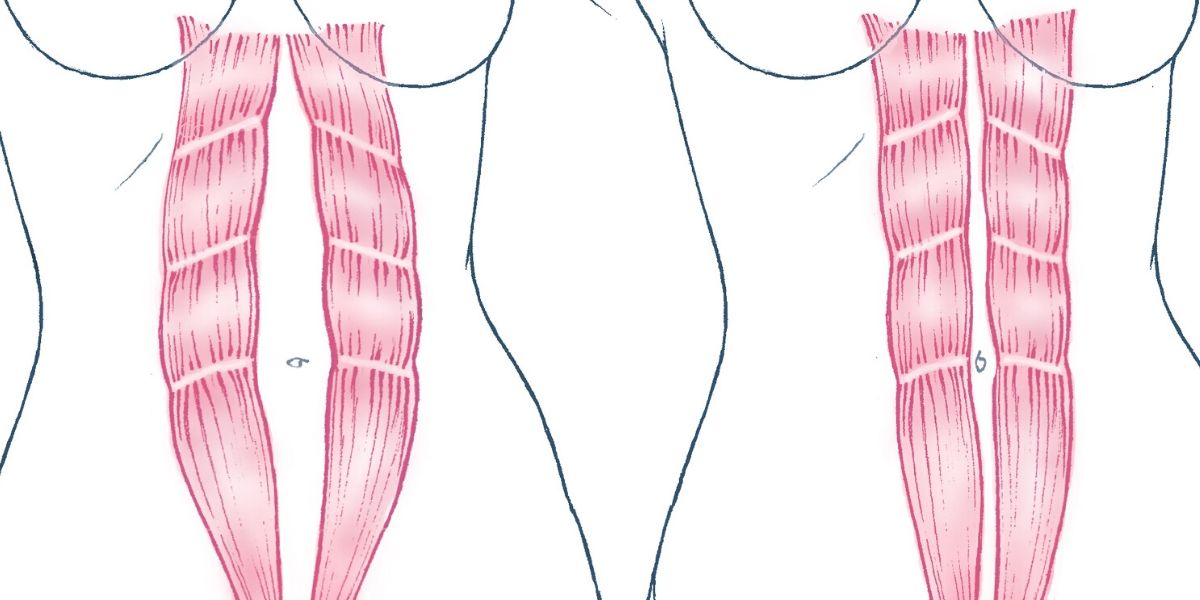
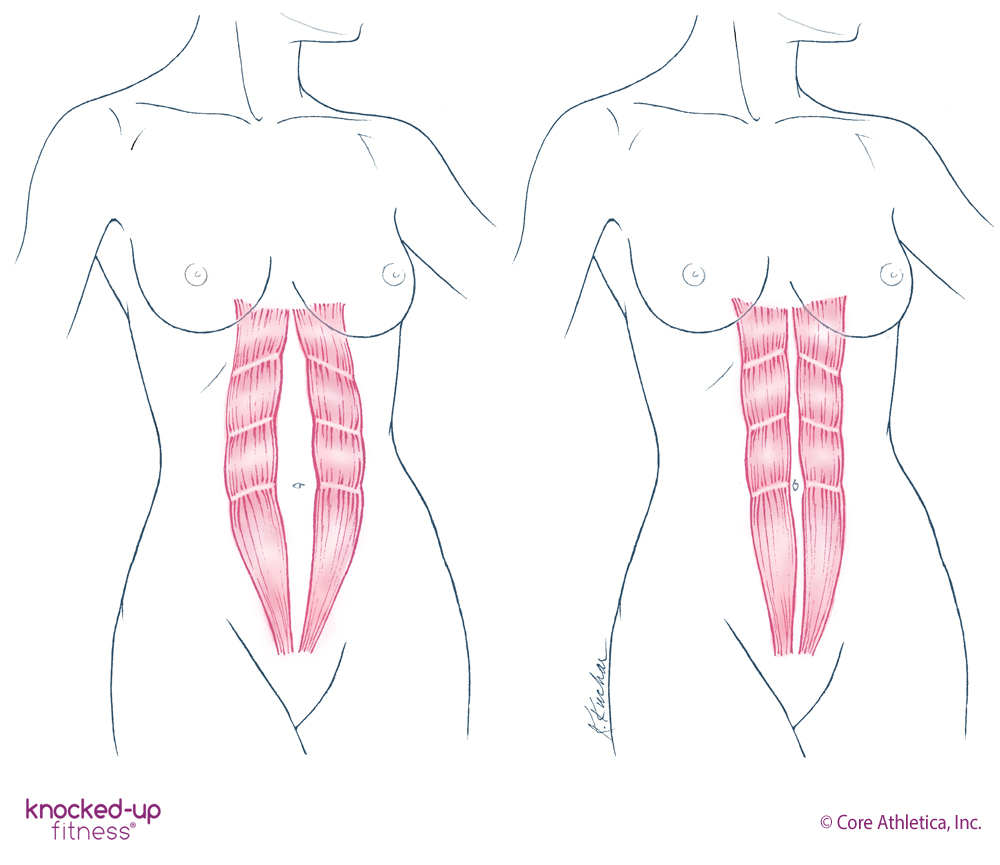
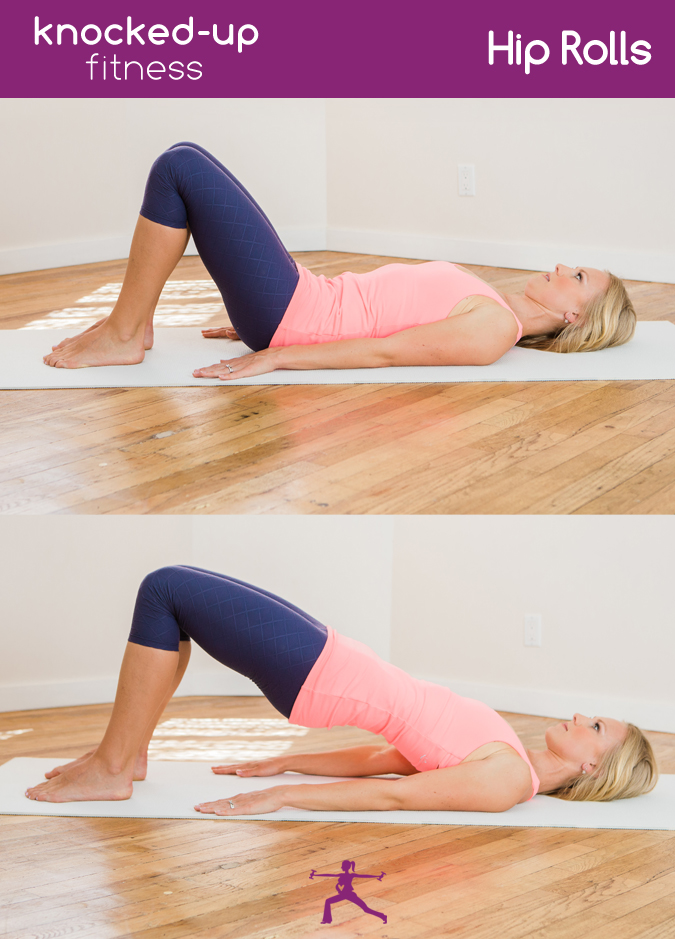

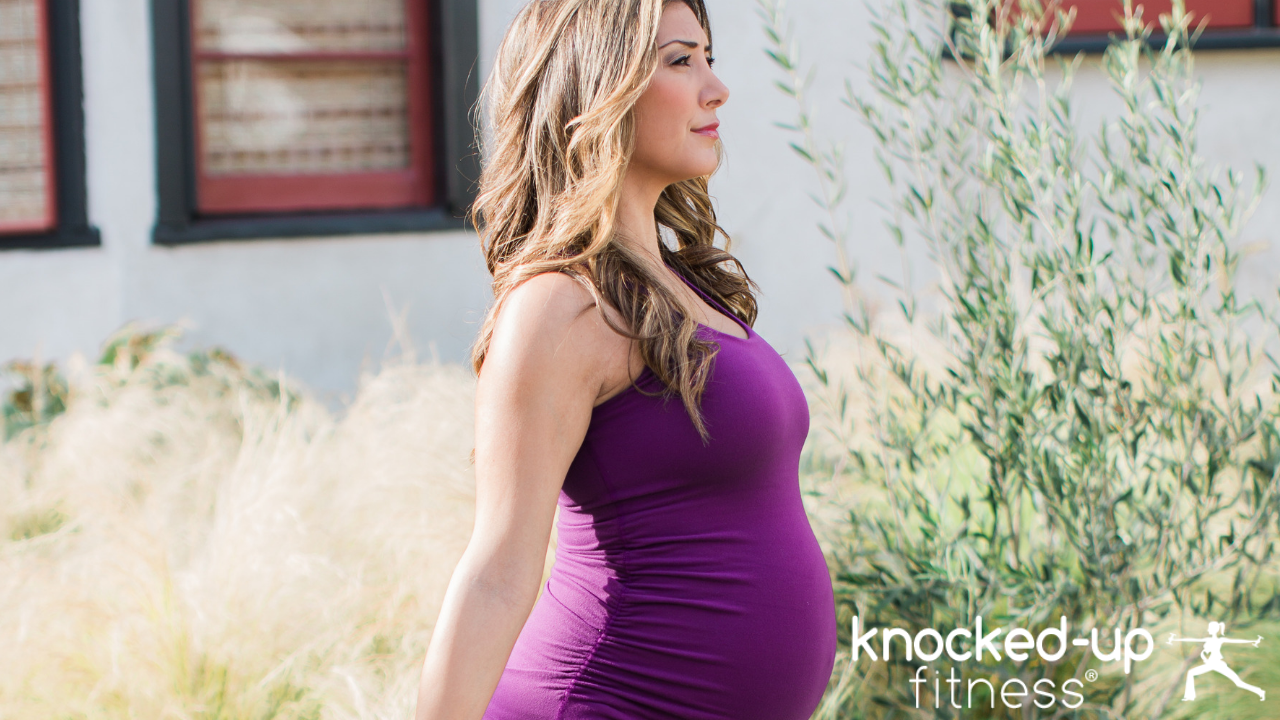
9 Comments